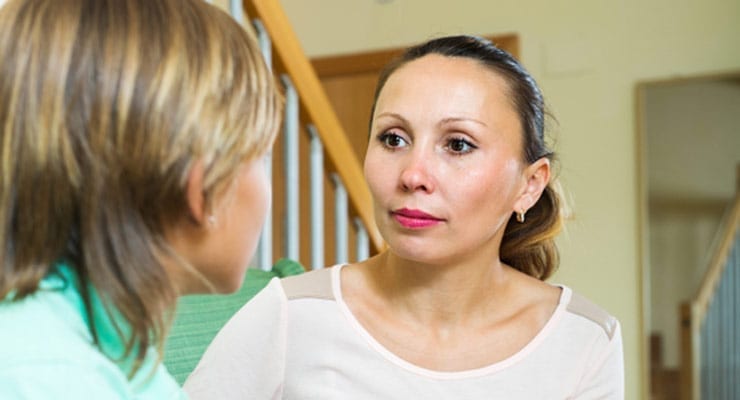Before last Friday night, only 8% of Americans knew someone who was transgender – whose gender identity does not match the sex he or she was born with. Today, an additional 16.8 million people who watched Diane Sawyer’s groundbreaking ABC interview with Olympian Bruce Jenner know someone who is transgender: Jenner himself.
Jenner spent nearly two eloquent, heartfelt, and at times light-hearted hours explaining to Sawyer that despite his athletic prowess, three marriages, and 10 children, since childhood he’d felt like a woman in a man’s body. At eight, not understanding what he was doing or why, he started wearing his sister’s dresses, “because it felt good.” Throughout his adult life, he continued to dress as a woman in private and even in public, as he tried to work out why he needed to do so.
It’s hard to think of a more interesting, better-qualified spokesperson than Jenner — who after winning the 1976 Montreal Olympics Decathlon was hailed the greatest male athlete in the world and a symbol of raw masculine power — to capture our national interest and explain to America the emotional intricacies of being transgender.
“I am a woman in my heart and soul even though I was not genetically born a woman,” the handsome 6’2 gold medalist turned reality star told Diane Sawyer. “I always felt I was telling a lie about my gender.”
It’s probably smart for all parents to use this media spotlight to decode for our kids, in our own words, in age appropriate terms, just what gender identity means. Explain the facts and ask them to imagine what if might feel like to be a girl, inside a boy’s body – or vice versa? Otherwise, our kids are sure to get some details wrong, especially if they get their info from the tv or the playground. Even for adults, it’s easy to get confused.
Here are some basics about being transgender:
According to Dr. Johanna Olsen, who runs the The Los Angeles-based Center for TransYouth Health and Development, children are born transgender. It’s not a parent’s fault or a child’s choice. For our country’s estimated 700,000 transgender people, it’s not a mental disorder, a character failure, or a psychological affliction. In fact, it’s normal.
Some experts believe that gender identity could actually be rooted in people’s brains, separate from our hormones, our genitals, and even our sexual desire. Gender identity is separate from sexual attraction; Jenner stressed he’s not a gay man and has never been attracted to, or sexually involved with, another man. This distinction matters for parents trying to clarify for kids what it means to be transgender.
Importantly, we parents need to remember that kids are going to want to know, right away, what transgender means for them. The 65-year-old Jenner is far more famous to our kids today as the stepfather to Kim, Khloe and Kourtney Kardashian, and their 100 million online followers, than as the Olympic athlete we may remember.
So naturally, a famous parent changing gender may trigger questions about whether we are going to change genders – not whether our kids might be transgender.
Jenner was careful to make it clear to his kids that they were allowed endless questions once he told them about his gender identity. He also stressed that he wasn’t going to rush them to accept this big change in their lives overnight. His kids expressed relief following his transgender admission (they’d seen signs of his exploring his gender identity for years). They wanted to protect him from media scrutiny.
But most of all, Jenner told Diane Sawyer, his children needed to be reassured that their dad wasn’t going anywhere.
“I told them all to still call me ‘Dad,” Jenner told ABC viewers. “I told them after 30 plus years as a father, I’m not going anywhere.”
Being transgender is not about cross-dressing, or experimenting with sexual identity as a normal part of growing up. Parents can get confused trying to figure out whether a child’s expression of independence is a developmental phase, or the beginnings of transgender exploration. According to Dr. Olsen, “Clothing is a big area where children will signal that their gender identity is different from their assigned gender. Assigned boys might want to wear dresses or skirts, grow their hair long and ask for things that allow them to be perceived as a girl. Assigned girls may refuse to wear dresses, and prefer boys’ underwear.”
There’s no need to raise an eyebrow if your son tries on a tutu, or your daughter wears boys’ swim trunks. Children cross-identify with the opposite gender as part of normal development. If someone is transgender, over time, he or she will know; only the person themselves, not we parents, will be the expert here.
However, normalizing childhood exploration of gender identity doesn’t mean we should downplay that transgender identification is real, and that accepting and transitioning to a different physical gender requires great self-awareness, courage, and family support. People grappling with being transgender have alarmingly high suicide rates, increased risk of being attacked and beaten in public, and higher unemployment than non-transgender people.
As Jenner’s story shows, it can take people decades to acknowledge themselves as transgender.
“It’s not that I’m trying to dress up as a woman,” Jenner says he told his kids. “It’s that I’ve spent my whole life living a lie as a man.”
Watching Jenner talk about his long journey to accept his gender identity, and his current challenge helping his kids understand the change, what’s clear is that Bruce Jenner has spent his life learning that we all need to be loved the way we are. A great lesson for kids and parents at any point in our lives. Unconditional acceptance is the greatest gift we can give ourselves – and the people we love.





